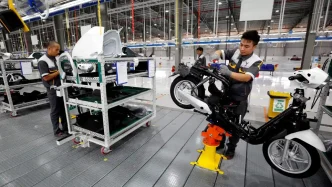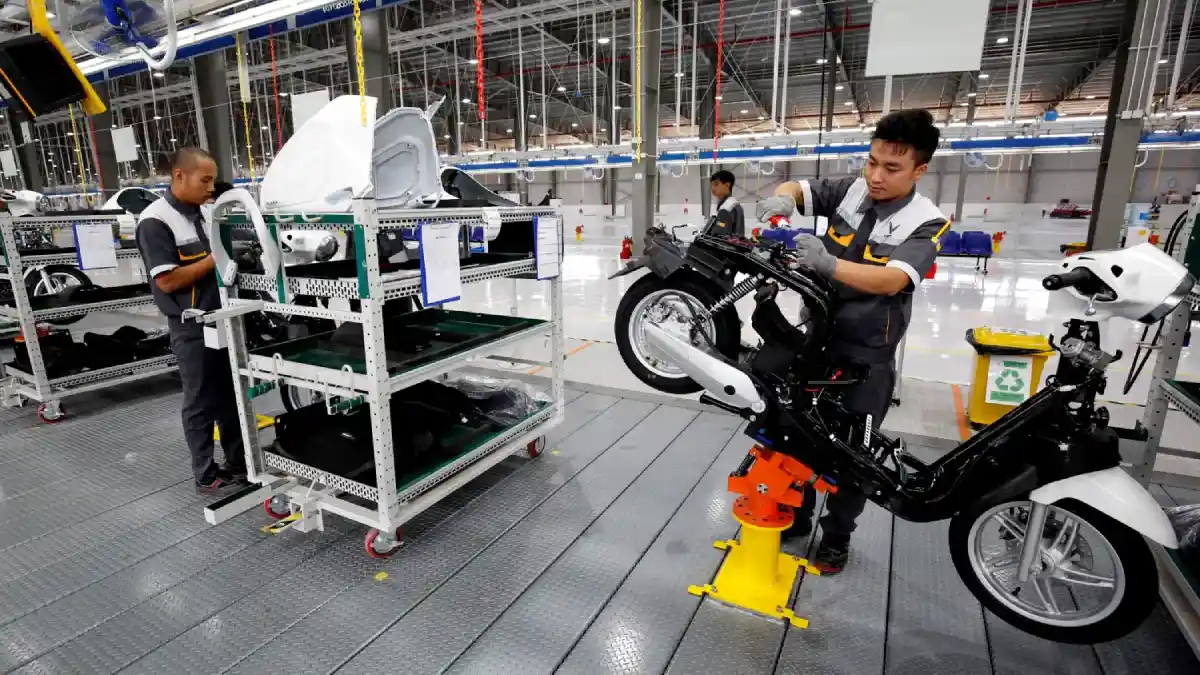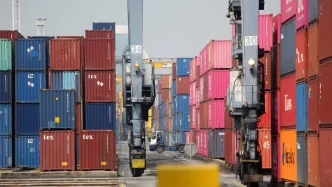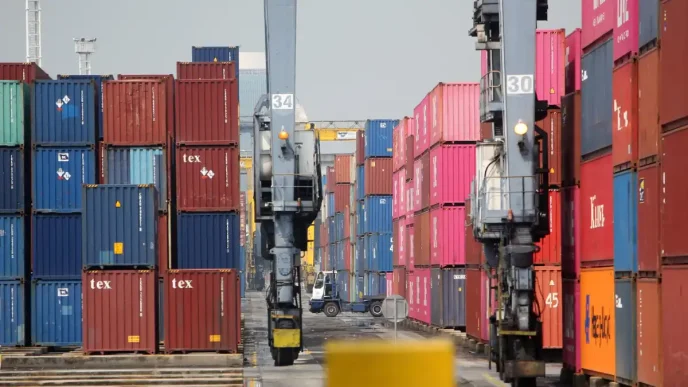Vietnam’s manufacturing sector has shown a notable recovery in July, with the Purchasing Managers’ Index (PMI) climbing to 52.4 from 48.9 in the previous month, signaling growth for the first time in four months. This resurgence, reported by S&P Global, reflects a strengthening in business conditions, though challenges such as US tariffs and raw material shortages continue to cast a shadow over the sector’s outlook. As one of Southeast Asia’s key manufacturing hubs, Vietnam’s economic health is closely watched, with implications for regional trade and global supply chains.
A Return to Growth
The Vietnam Manufacturing PMI, a critical indicator of the sector’s performance, crossed the 50.0 threshold in July, marking an expansion after months of stagnation. According to S&P Global, this improvement is the most significant in nearly a year, driven by a renewed increase in new orders. Businesses reported a surge in customer demand, with new business growing at the fastest rate since November of the previous year. This uptick has bolstered production, with output rising for the third consecutive month and at the quickest pace in 11 months.
The revival of new orders has also spurred purchasing activity, with companies ramping up input buying at the fastest rate since August last year. This suggests a growing confidence among manufacturers in Vietnam, a country heavily reliant on exports of electronics, textiles, and footwear. However, the picture is not entirely rosy. While domestic demand appears robust, new export orders continued to decline, extending a nine-month contraction largely attributed Agencia de Información y Análisis attributed to the impact of US tariffs.
US Tariffs: A Persistent Hurdle
The specter of US tariffs looms large over Vietnam’s manufacturing sector, particularly for industries dependent on American markets. Some manufacturers noted that these tariffs have directly hampered new order growth from abroad, a trend that has persisted for nearly a year. This external pressure comes at a time when Vietnam is striving to position itself as a viable alternative to China in global supply chains, benefiting from trade diversions amid US-China tensions.
Despite these challenges, Vietnamese firms have managed to secure business from other markets, offsetting some of the losses in export orders. Andrew Harker, economics director at S&P Global Market Intelligence, highlighted this adaptability, noting that while tariffs continue to drag on export performance, total new orders have returned to growth. However, the long-term impact of sustained trade barriers remains a concern for policymakers and industry leaders alike.
Supply Chain Strains and Rising Costs
Beyond trade barriers, Vietnam’s manufacturers are grappling with significant supply chain disruptions. July saw a further lengthening of suppliers’ delivery times, driven by difficulties in sourcing raw materials, especially from international markets. This has led to a depletion of purchase stocks, though the pace of decline was the slowest since December 2023. Stocks of finished goods also decreased, underscoring the challenges in maintaining inventory levels amid material shortages.
These supply issues have contributed to rising input costs, with prices increasing for the second consecutive month and at the fastest rate in 2025 so far. Manufacturers face a dual burden: securing scarce materials and managing higher expenses, which could squeeze profit margins if not passed on to consumers. Harker warned that persistent supply chain problems could constrain future growth, emphasizing the need for strategic solutions to mitigate these risks.
Labor Market and Business Sentiment
On the employment front, the manufacturing sector showed signs of stabilization in July. While staffing levels continued to decline due to spare capacity lingering from earlier drops in new orders, the rate of reduction was the slowest in nine months. Rising output requirements have begun to support labor demand, hinting at a potential turnaround in hiring trends if growth sustains.
However, business confidence took a dip in July, falling to a three-month low and remaining well below the long-term average. While manufacturers are hopeful about output growth over the next 12 months, buoyed by expectations of economic stability and upcoming product launches, concerns over US tariffs continue to weigh heavily on their outlook. This cautious optimism reflects the delicate balance between recovery and external uncertainties that defines Vietnam’s current economic landscape.
Economic Context and Regional Implications
Vietnam’s manufacturing rebound must be viewed within the broader context of its economic ambitions. The country has emerged as a key player in Southeast Asia’s industrial ecosystem, attracting significant foreign investment due to its competitive labor costs and strategic location. The government has prioritized industrial growth as part of its socio-economic development plan, aiming to transform Vietnam into a modern industrialized nation by 2030.
The PMI uptick in July aligns with these aspirations, signaling resilience in a sector that accounts for a substantial share of Vietnam’s GDP and employment. Yet, the persistent decline in export orders highlights vulnerabilities tied to global trade dynamics. US tariffs, initially imposed to address trade imbalances and intellectual property concerns, have inadvertently affected smaller economies like Vietnam, which rely on export-led growth.
Regionally, Vietnam’s performance has implications for ASEAN’s economic integration. As a member of the ASEAN Free Trade Area and signatory to multiple trade agreements like the Regional Comprehensive Economic Partnership (RCEP), Vietnam plays a pivotal role in regional supply chains. Challenges faced by its manufacturers—whether from tariffs or supply shortages—could ripple across neighboring economies, affecting everything from raw material flows to finished goods distribution.
Policy Responses and Industry Adaptation
Addressing the dual challenges of tariffs and supply chain disruptions will require coordinated efforts from both government and industry. Vietnamese policymakers have already taken steps to diversify export markets, forging stronger ties with the European Union, Japan, and South Korea through trade pacts. The EU-Vietnam Free Trade Agreement, for instance, has opened new avenues for Vietnamese goods, reducing reliance on traditional markets like the US.
At the industry level, manufacturers are exploring ways to localize supply chains, reducing dependence on imported raw materials. Investments in domestic production of intermediate goods could help mitigate the impact of global supply disruptions, though such transitions require time and capital. Additionally, technology adoption—such as automation and digital inventory management—could enhance efficiency and resilience against future shocks.
However, these measures are not without hurdles. Localizing supply chains may increase production costs in the short term, while technology adoption demands skilled labor and infrastructure upgrades. The government’s role in facilitating these transitions—through subsidies, training programs, or regulatory reforms—will be crucial in sustaining the manufacturing sector’s momentum.
Looking Ahead
As Vietnam’s manufacturing sector navigates this period of recovery, the interplay between domestic strengths and external pressures will shape its trajectory. The July PMI data offers a glimmer of hope, suggesting that the industry is regaining its footing after months of disruption. Yet, the road ahead is fraught with uncertainties, from geopolitical trade tensions to logistical bottlenecks.
For now, stakeholders are watching closely to see if this growth can be sustained. Will Vietnam’s manufacturers adapt swiftly enough to overcome supply chain challenges? Can the government broker solutions to mitigate the impact of US tariffs? These questions loom large as the sector stands at a critical juncture, balancing newfound optimism with the weight of unresolved risks.
















